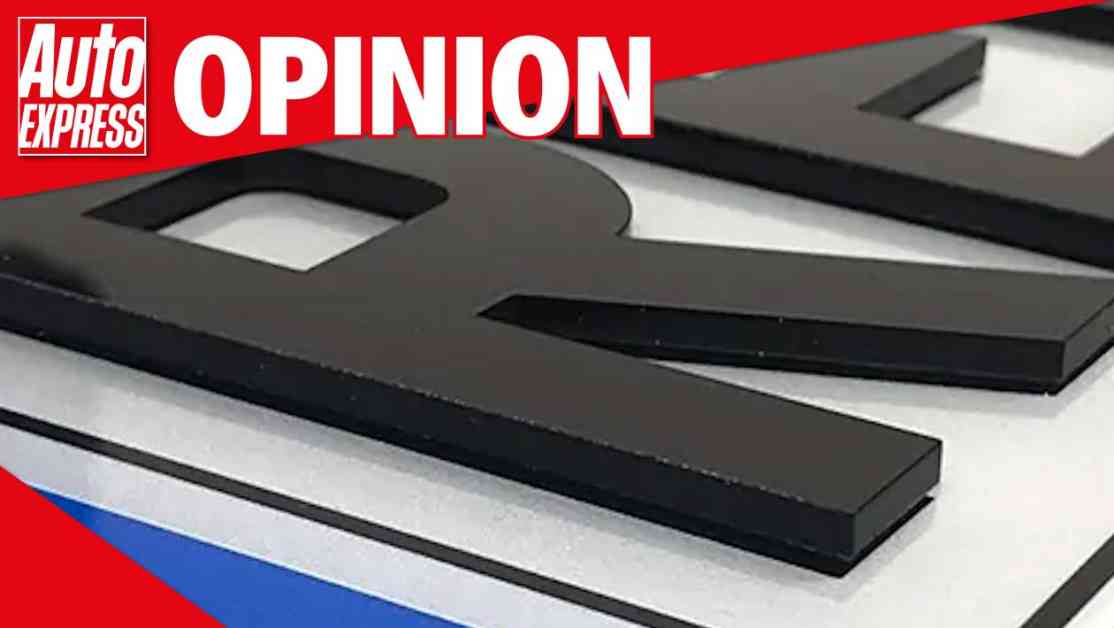UK Number Plate Regulations: Clarifying the Confusion for Motorists
In the world of UK number plate regulations, confusion seems to reign supreme, leaving many motorists scratching their heads over what is and isn’t allowed when it comes to displaying their plates. With potential penalties including a £1,000 fine, MoT failure, and even confiscation of private registrations, it’s crucial for drivers to have a clear understanding of the rules. Unfortunately, the lack of a comprehensive resource from the DVLA or DfT has left many in the dark about the dos and don’ts of number plates.
When the current British Standard for number plates was released in August 2021, there was a period of adjustment as manufacturers and suppliers scrambled to ensure compliance. While most aspects remained consistent, the issue of 3D and 4D number plates sparked a wave of uncertainty and conflicting reports. The debate around the legality of these plates raged on, with many unsure if the popular 3D gel plates and the controversial “4D” variant were permissible.
One thing that is clear is that the faux 3D effect created by printing textures or shades on flat characters is no longer allowed on UK roads. It is strictly forbidden to buy or sell plates of this type or install them on vehicles for road use. However, the status of 3D gel and 4D plates remains a grey area, with conflicting interpretations from manufacturers, motorists, and law enforcement.
The DVLA takes a somewhat ambiguous stance, stating that 3D gel and 4D plates are legal as long as they meet the British Standard requirements. While the standard outlines specifications for color, reflectivity, and character sizes, it fails to address the height at which characters on 3D and 4D plates may protrude. This lack of clarity has led to confusion among drivers and even penalties for those whose plates were deemed too difficult to read.
Some London taxi drivers have been fined for having characters on their 4D plates protrude too far, prompting questions about the legal height limit for these plates. Despite efforts to clarify this issue, no official source has been able to provide a definitive answer. To err on the side of caution, Regtransfers, a leading number plate dealer, now supplies 4D plates with characters raised to 3mm, lower than the reported 5mm or 6mm limits.
The absence of a comprehensive resource from the government has left many motorists seeking clarity on number plate regulations. While some manufacturers and dealers have attempted to fill this void, the need for an official and definitive guide from the authorities remains paramount. Until then, drivers are left to navigate the murky waters of number plate legality on their own.
3D and 4D Plates: Legal or Illegal?
The debate over the legality of 3D and 4D plates continues to divide opinions, with no clear consensus in sight. While the DVLA maintains that these plates are permissible if they adhere to the British Standard, questions linger about the protrusion height of characters. The conflicting interpretations from different stakeholders only add to the confusion, leaving drivers unsure about the legitimacy of their plates.
The Need for Clear Guidance
In light of the ongoing confusion surrounding number plate regulations, there is a pressing need for clear and comprehensive guidance from the government. A centralized resource that outlines the dos and don’ts of number plates would provide much-needed clarity for motorists and prevent unnecessary fines and penalties. Until such a resource is made available, drivers are left to navigate the complex world of number plate regulations on their own.
Share Your Opinion
What are your thoughts on 3D and 4D number plates? Do you believe they should be allowed on UK roads, or do you think they pose a safety risk? Share your opinions in the comments below and join the conversation on this contentious issue.
As the debate over 3D and 4D number plates continues, it is evident that clearer guidance is needed to help motorists navigate the complex world of number plate regulations. With potential penalties at stake, drivers must stay informed and ensure their plates comply with the law to avoid any unwanted fines or consequences. Until the government provides a comprehensive resource on number plate legality, drivers are left to decipher the rules on their own, adding to the confusion and uncertainty in this contentious issue.










